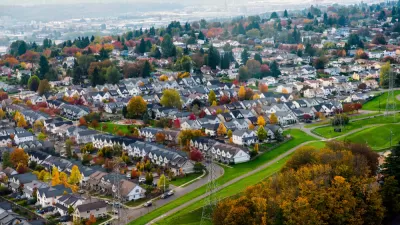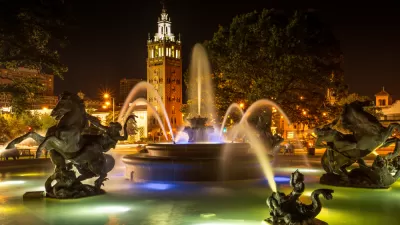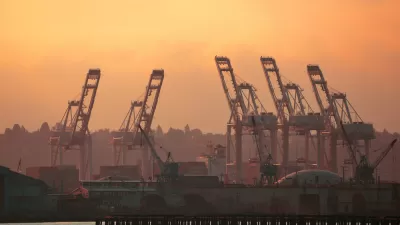On the sixty-year anniversary of the genesis of the country's first enclosed mall, Mark Hinshaw looks at America's foolish detour into shopping malls.
In the six decades since Victor Gruen published his shopping mall manifesto in Progressive Architecture magazine, "many hundreds of malls have been built on thousands of acres in virtually every part of the country" forever changing "how we travel, how we spend our leisure time, and how we spend our money," writes Hinshaw.
Perhaps more significant is the sprawling suburban land use model that the enclosed mall and its sea of parking helped facilitate, to the detriment of our traditional downtowns and main streets. Most ironically, as Hinshaw notes, "Gruen saw his model as saving cities and towns, instead of draining their downtowns of life, though that's what happened more often than not."
Hinshaw relishes the fact that the enclosed mall era seems to be coming to an end nationwide. In his own region, this trend is evidenced in the fact that, "Here in Puget Sound, the last regional mall built was Silverdale, almost 20 years ago - even though the central Puget Sound population has grown by more than 2 million people in that same time!"
Hinshaw concludes his article with a look at the future that might have been, as demonstrated by a far different model of retail development pioneered earlier in the last century by Jessie Clyde ("J.C.") Nichols at Country Club Plaza in Kansas City, which still exists today.
"Known affectionately by locals as simply 'The Plaza,' it shines in its utter brilliance. Rather than the vast parking lots envisioned by Gruen in the 50s, Nichols placed all of the parking in multilevel garages, wrapped with small shops and whimsically-designed facades. Every single store, large or small, faces a street. Large trees and wide sidewalks, along with elegant light fixtures, faintly echo the grand boulevards of Paris."
FULL STORY: America's foolish detour into shopping malls

Maui's Vacation Rental Debate Turns Ugly
Verbal attacks, misinformation campaigns and fistfights plague a high-stakes debate to convert thousands of vacation rentals into long-term housing.

Planetizen Federal Action Tracker
A weekly monitor of how Trump’s orders and actions are impacting planners and planning in America.

In Urban Planning, AI Prompting Could be the New Design Thinking
Creativity has long been key to great urban design. What if we see AI as our new creative partner?

Portland Raises Parking Fees to Pay for Street Maintenance
The city is struggling to bridge a massive budget gap at the Bureau of Transportation, which largely depleted its reserves during the Civd-19 pandemic.

Spokane Mayor Introduces Housing Reforms Package
Mayor Lisa Brown’s proposals include deferring or waiving some development fees to encourage more affordable housing development.

Houston Mayor Kills Another Bike Lane
The mayor rejected a proposed bike lane in the Montrose district in keeping with his pledge to maintain car lanes.
Urban Design for Planners 1: Software Tools
This six-course series explores essential urban design concepts using open source software and equips planners with the tools they need to participate fully in the urban design process.
Planning for Universal Design
Learn the tools for implementing Universal Design in planning regulations.
Gallatin County Department of Planning & Community Development
Heyer Gruel & Associates PA
JM Goldson LLC
City of Camden Redevelopment Agency
City of Astoria
Transportation Research & Education Center (TREC) at Portland State University
Jefferson Parish Government
Camden Redevelopment Agency
City of Claremont





























